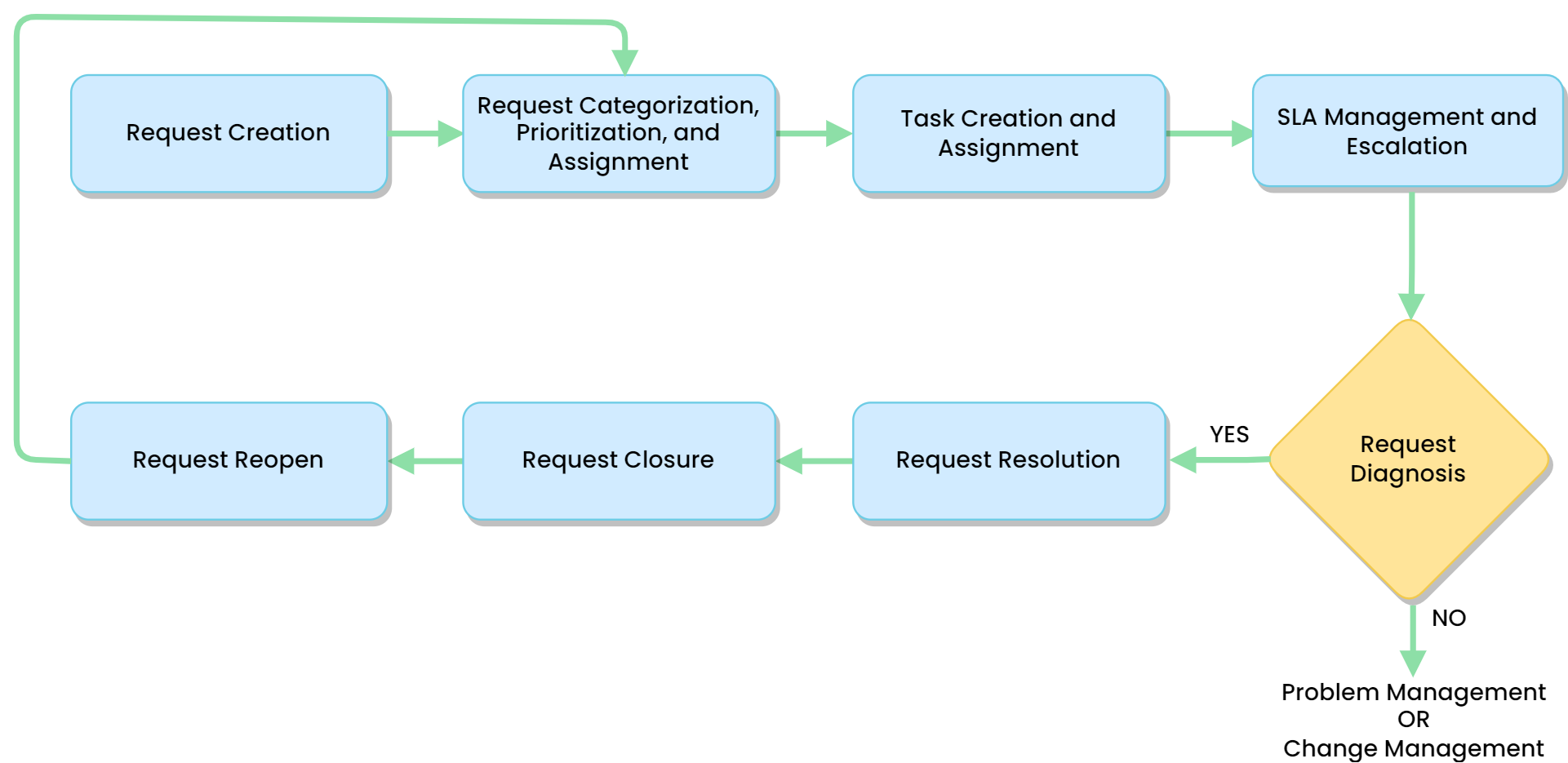Request Management
Know how Request Management helps in tracking and managing the various requests.
What is Request Management?
Request Management is a module using which you can log, analyze, and resolve the requests. Its main aim is to fulfill the requests of the requesters in minimum time and maintain the quality.
What is a Request?
Request is a service requirement or an unexpected disturbance that the users raise. It initiates a service action that is agreed as a standard process of service delivery. There are two types of requests:
- Incident Requests: These requests are raised when there is a failure or degradation of a service. For example: The Email Server is not Working.
- Service Requests: These requests are raised for normal requirements like things and services. For example: Request to reset password or Request for a new Mouse.
Request Management in ServiceOps
Whenever a user creates a request in the Support Portal (requesters) or Technician Portal (Technicians) a ticket gets created. Request is also known as a Ticket. The request is a means by which you can communicate with the requesters.
The ServiceOps Request Management involves the following activities:

